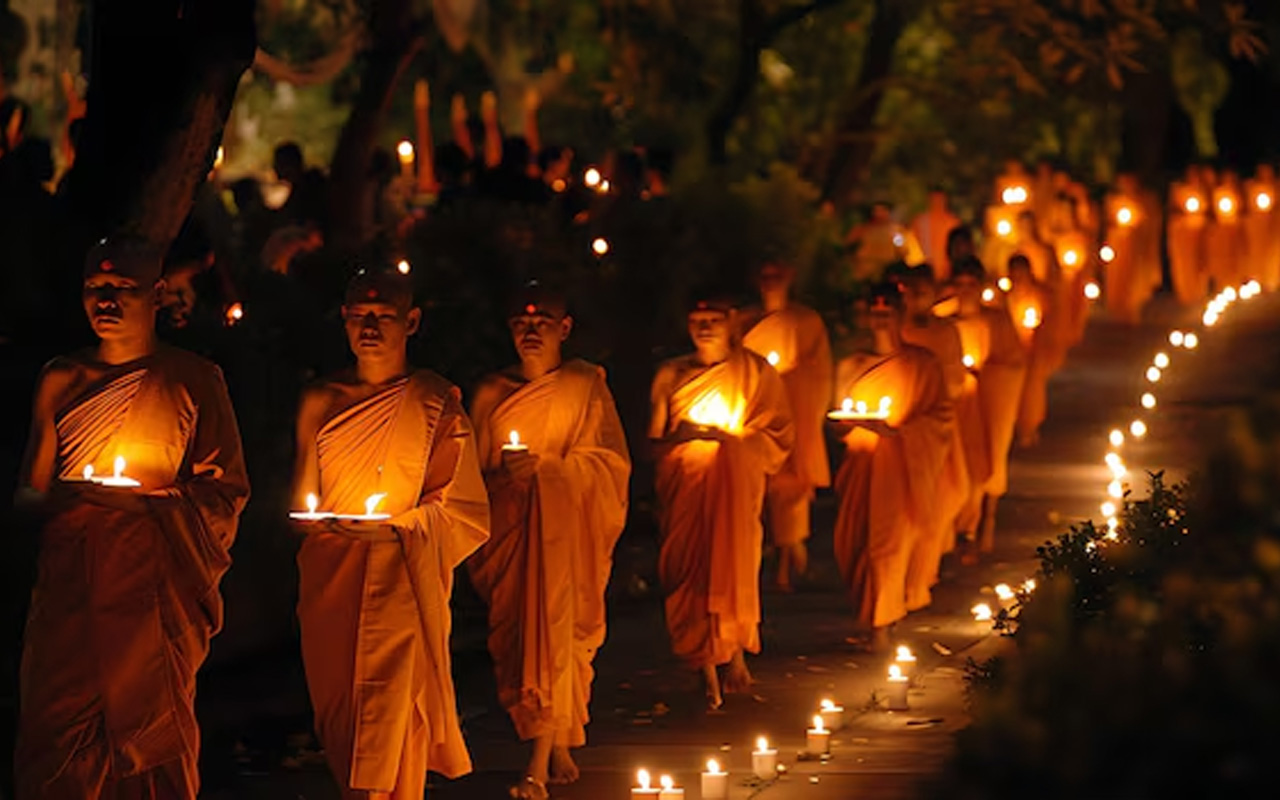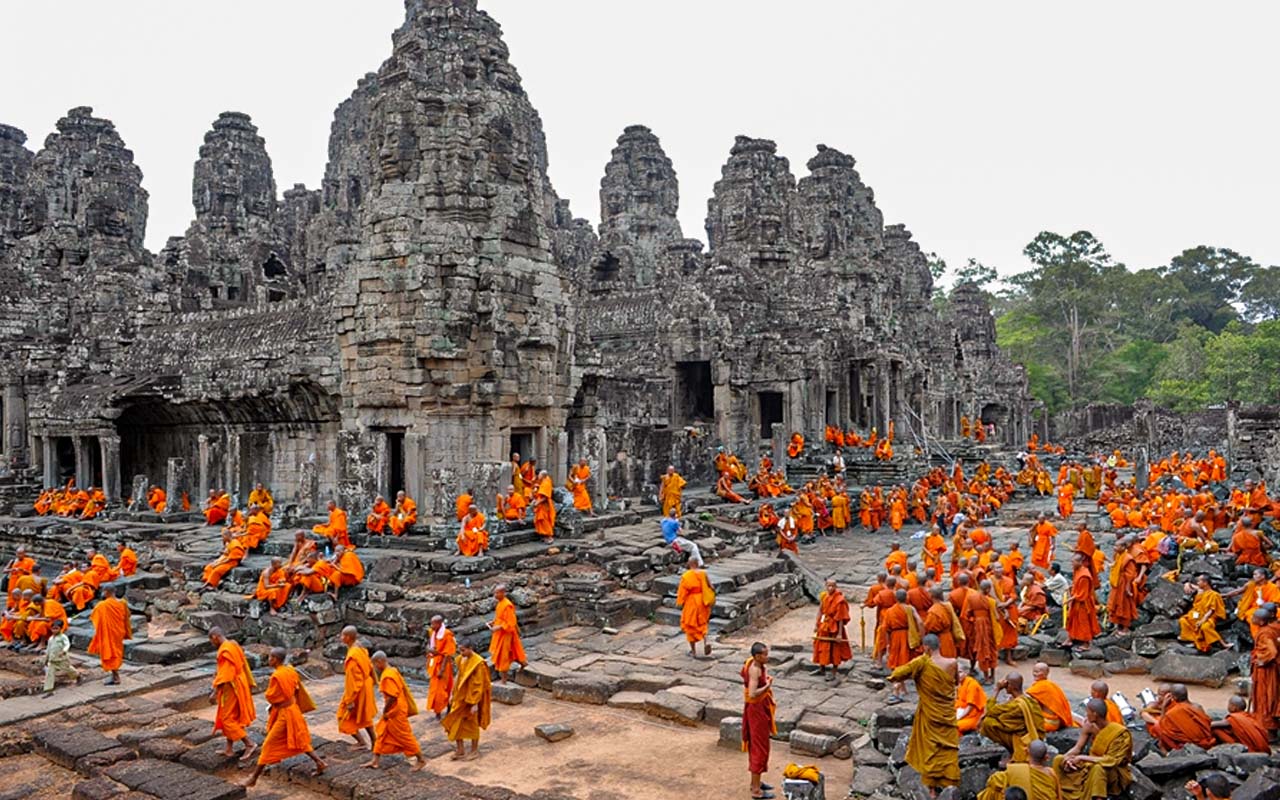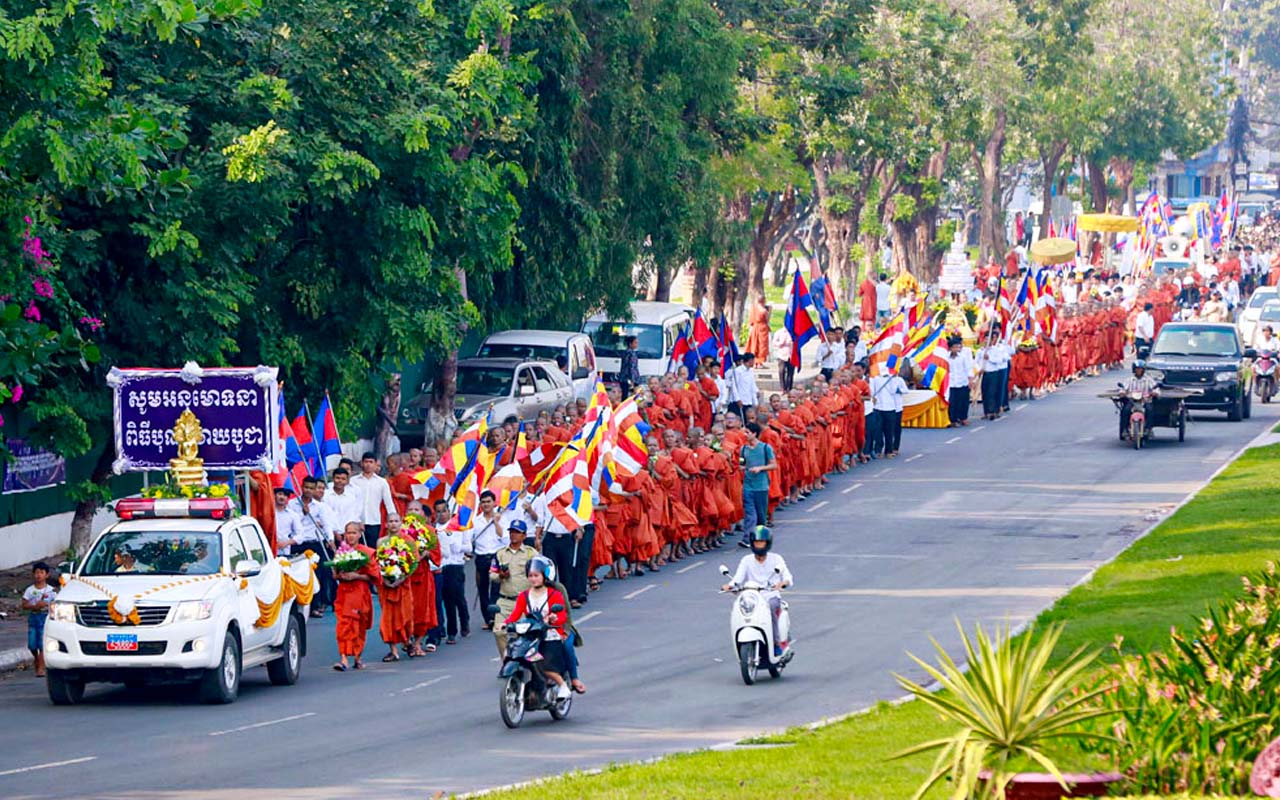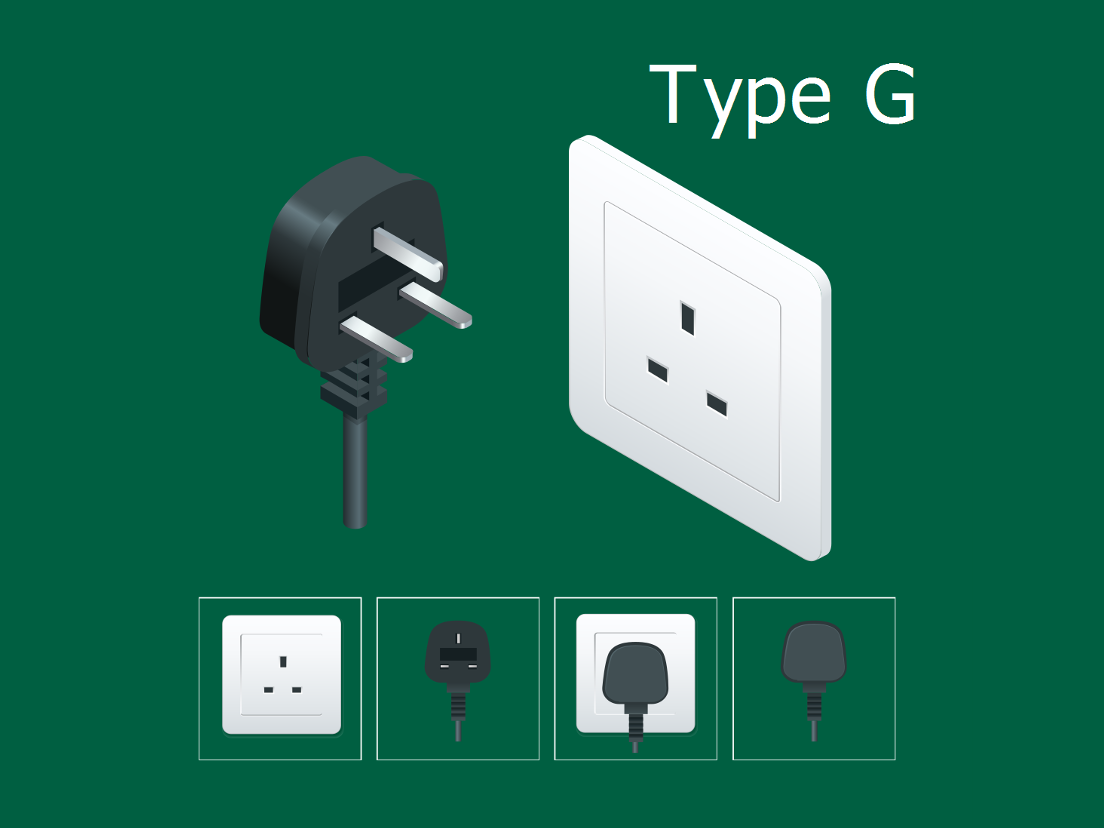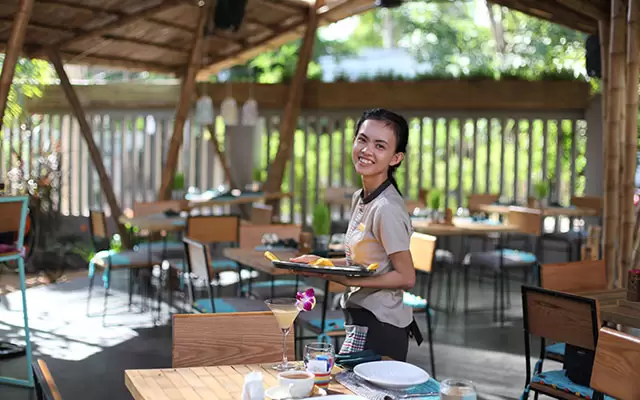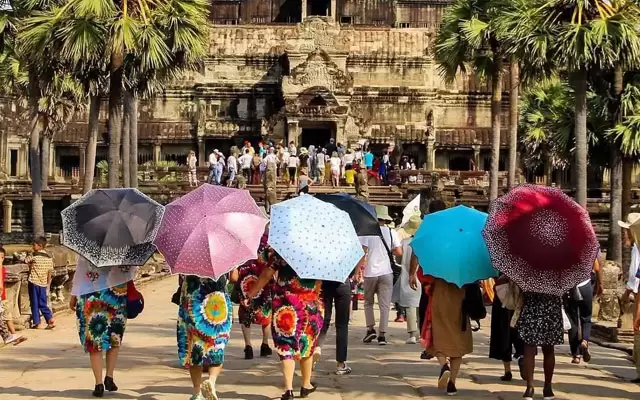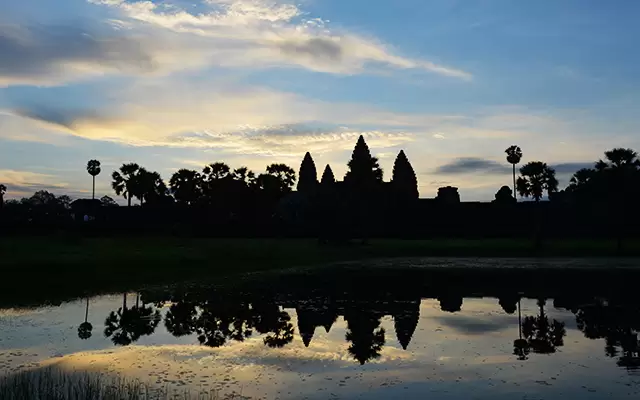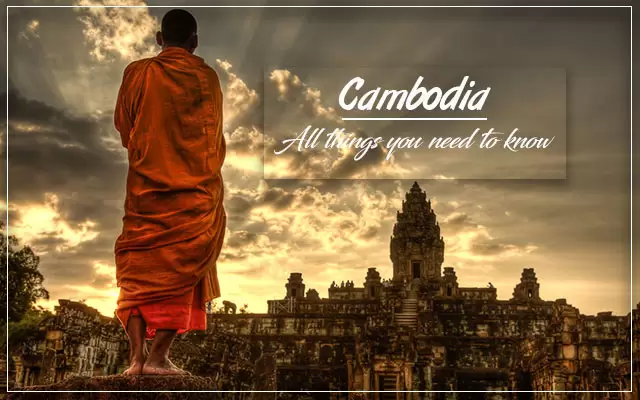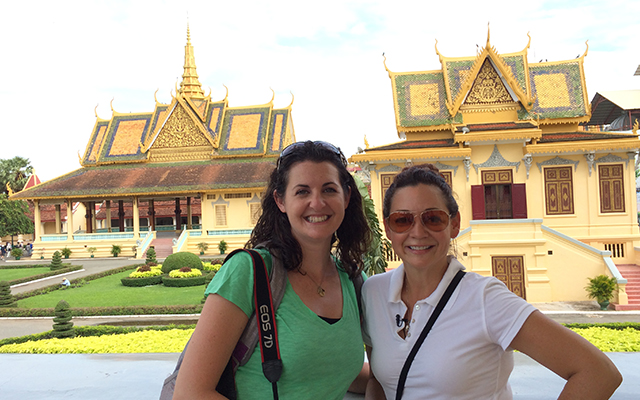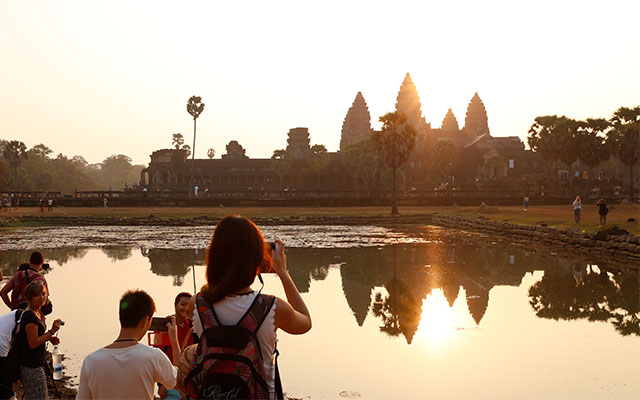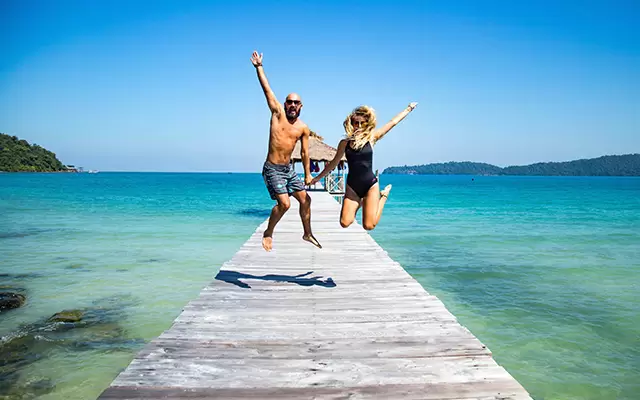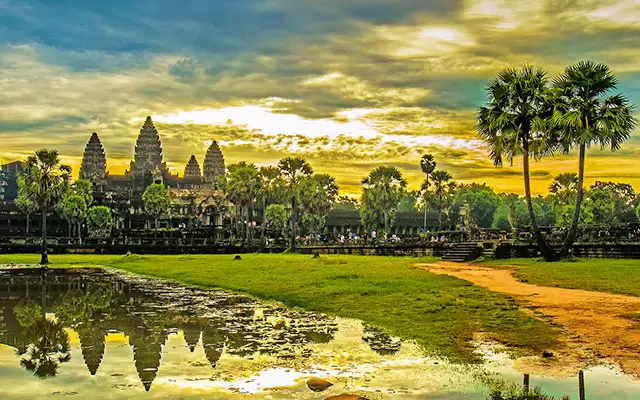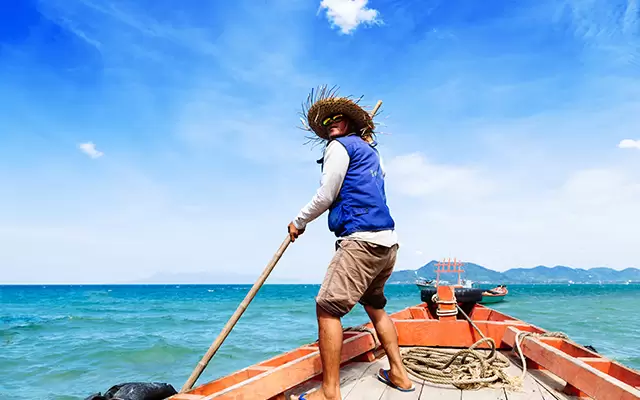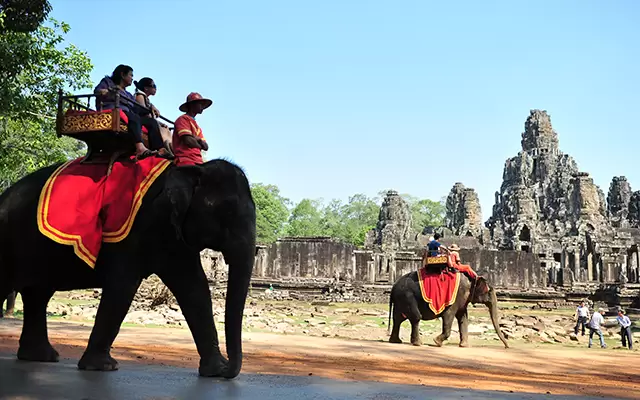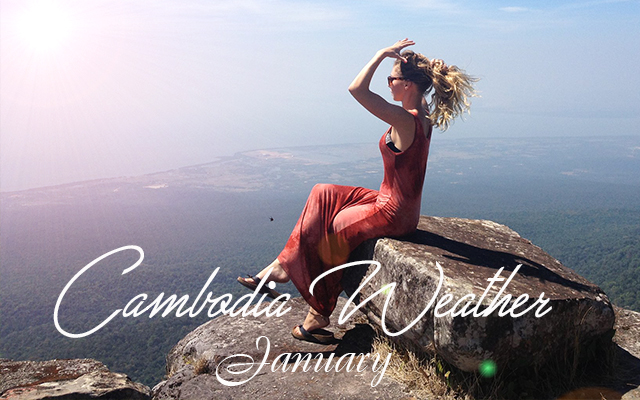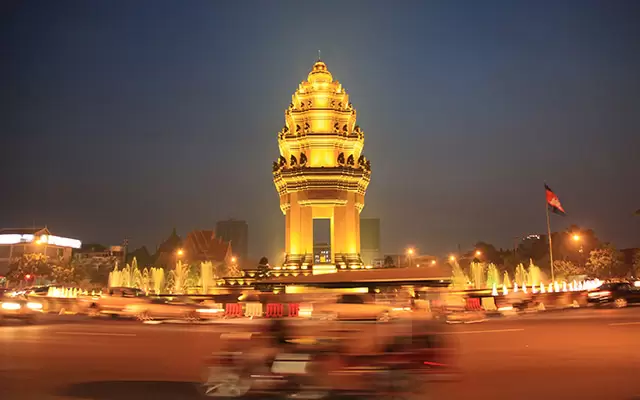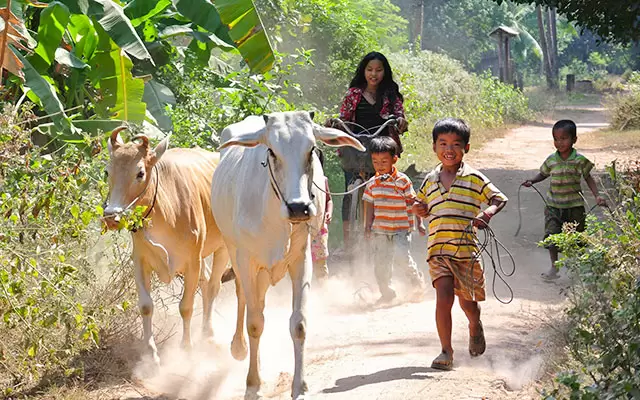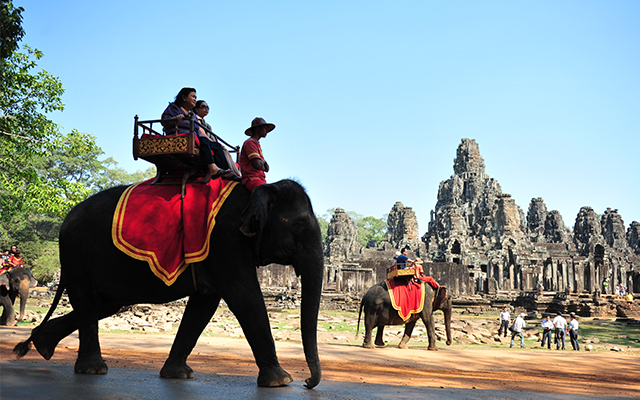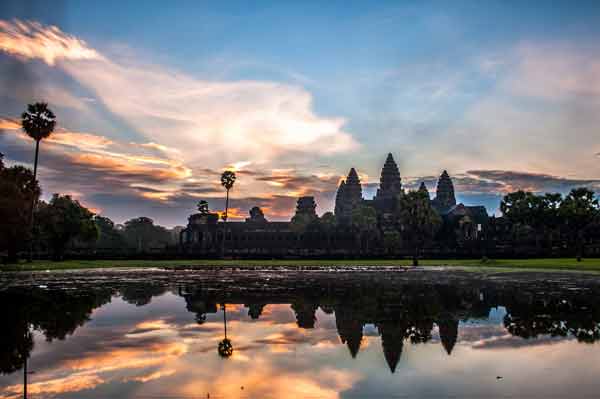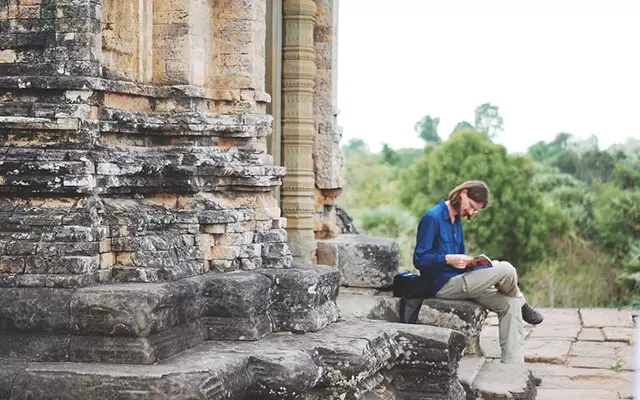Meak Bochea Festival in Cambodia: A Sacred Buddhist Celebration
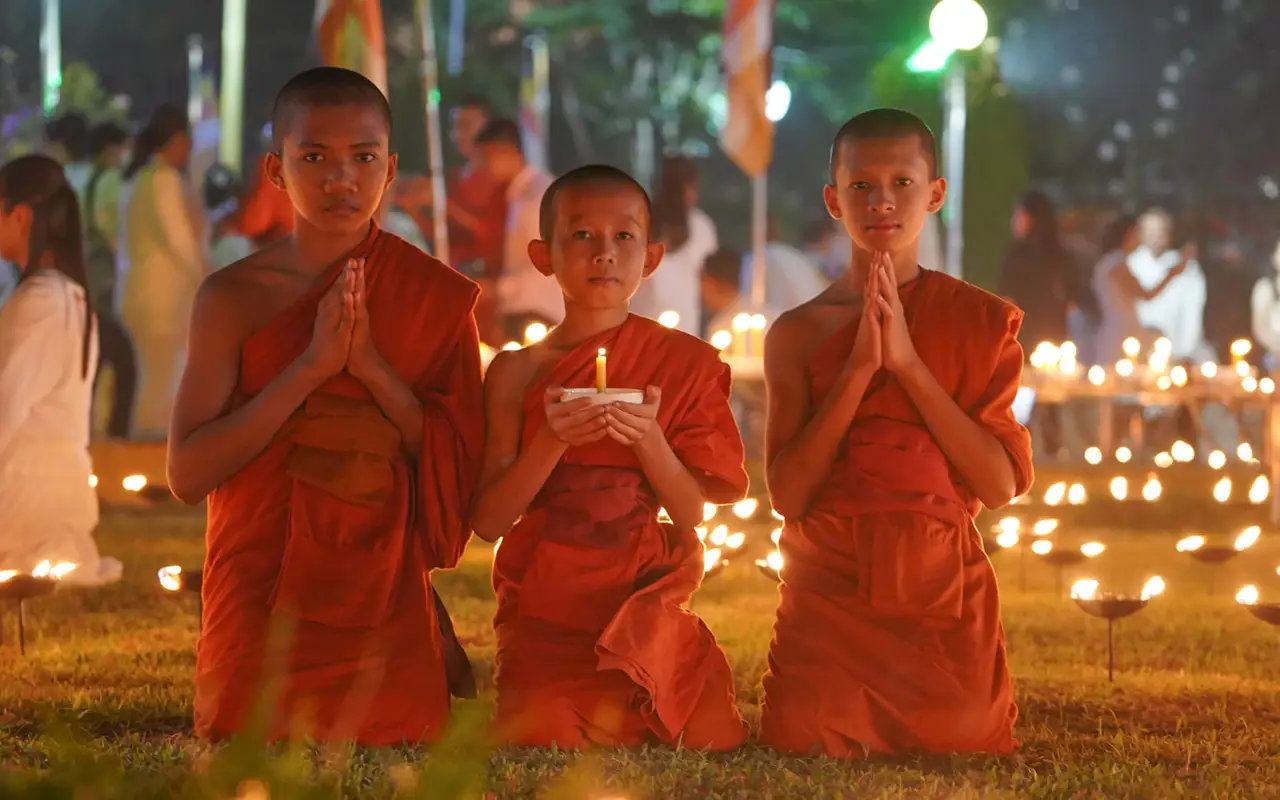
The silhouette of worshippers against the twilight sky creates a visually powerful moment of spiritual unity.
Are you planning to explore the rich cultural tapestry of Southeast Asia and seeking unique experiences beyond the usual tourist trails? Then mark your calendar for the Meak Bochea Festival in Cambodia, a truly captivating and profoundly spiritual observance that offers a deep dive into the nation’s Theravada Buddhist heritage. Often overshadowed by the more widely known Khmer New Year or Water Festival, Meak Bochea (also known as Magha Puja in other Buddhist countries) holds immense significance for Cambodian Buddhists, commemorating pivotal moments in the life of Lord Buddha.
This sacred Buddhist festival in Cambodia is celebrated on the full moon day of the third lunar month, typically falling in February or March of the Gregorian calendar. It honors the spontaneous gathering of 1,250 enlightened disciples to hear Buddha’s final sermon, a sermon that encapsulates the core principles of Buddhism: ceasing from all evil, doing only what is good, and purifying the mind. Unlike purely celebratory events, Meak Bochea traditions emphasize reflection, merit-making, and spiritual renewal, offering visitors a unique opportunity to witness profound devotion and participate in peaceful ceremonies. From the solemn candlelight processions at Cambodian temples to offerings of respect and acts of charity, understanding the significance of Meak Bochea provides invaluable insight into the spiritual heart of the Cambodian people and their enduring connection to Buddhist history. Join us as we explore the details of this powerful Cambodian religious festival and discover why it’s a must-experience for any culturally curious traveler.
Table of Contents
- What Is Meak Bochea? Historical & Religious Significance
- When and Where Is Meak Bochea Celebrated in Cambodia?
- Key Rituals: Almsgiving, Dhamma Talks & Candlelight Procession
- Top Pagodas and Locations to Experience Meak Bochea
- Cultural Etiquette and Dress Code for Visitors
- Photography & Filming Guide: Capturing the Candlelight Ceremony
- Comparing Meak Bochea with Visak Bochea
What Is Meak Bochea? Historical & Religious Significance
Meak Bochea, also known as Māgha Pūjā in other Buddhist countries, is a profoundly significant Buddhist festival celebrated primarily in Southeast Asian nations like Cambodia, Thailand, Laos, and Sri Lanka. It falls on the full moon day of the third lunar month, usually in February or March of the Gregorian calendar.
Historical Significance of Meak Bochea
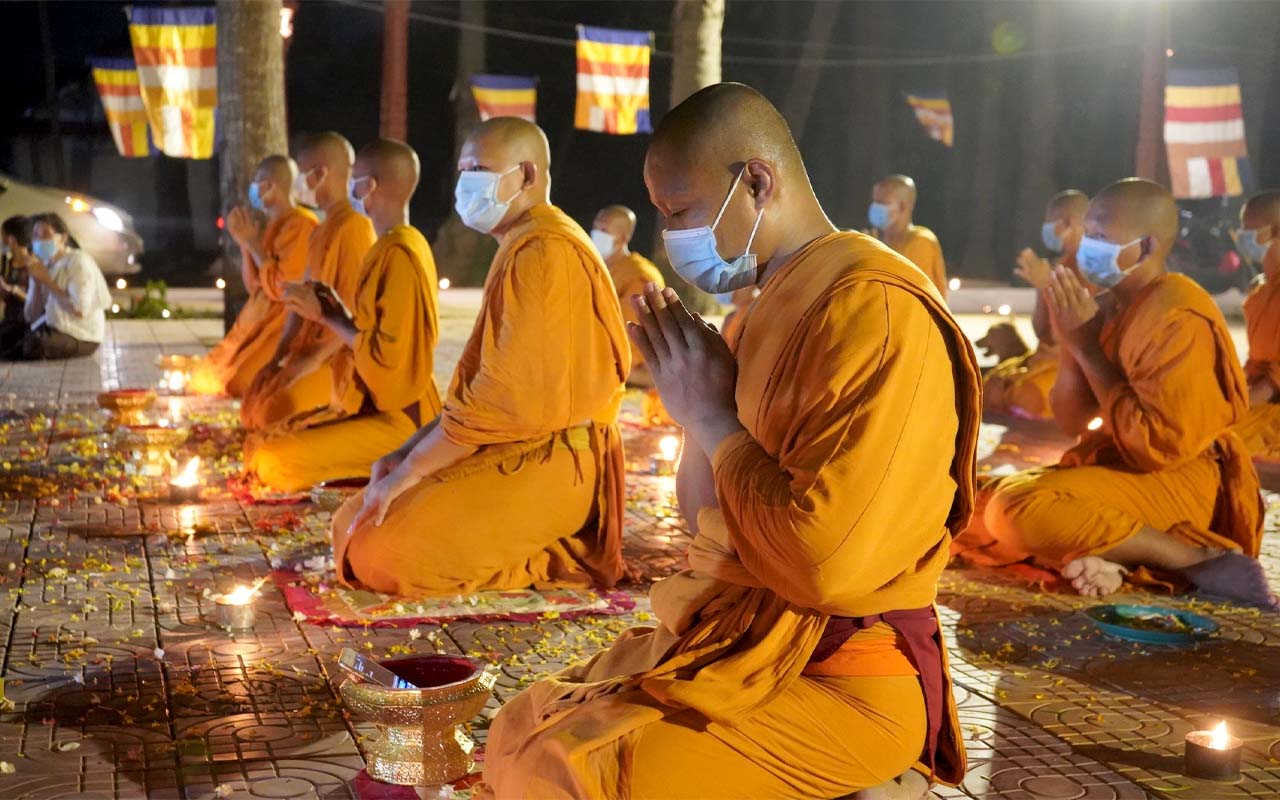
Devotees gather at a pagoda during Meak Bochea to participate in spiritual rituals and merit-making.
Meak Bochea commemorates a pivotal event in the life of the Buddha, occurring ten months after his enlightenment. This day marks what is often referred to as the “Fourfold Assembly” or the “Sangha Day,” due to four extraordinary factors that converged:
- 1,250 enlightened disciples (Arahants) spontaneously gathered: These monks came together without prior invitation, all having attained a high level of spiritual realization.
- All were ordained by the Buddha himself: Each of these disciples had received their ordination directly from the Buddha, not through intermediaries.
- The gathering occurred on the full moon day of the third lunar month (Magha): This specific lunar phase is considered auspicious in Buddhist traditions.
- The Buddha delivered the “Ovādapātimokkha”: During this assembly, the Buddha delivered a summary of his core teachings, known as the Ovādapātimokkha. This sermon encapsulated the essence of Buddhism in three key principles:
- Cessation of all evil: To refrain from all unwholesome actions.
- Performance of what is wholesome: To cultivate good deeds and wholesome conduct.
- Purification of the mind: To cleanse and purify one’s thoughts and intentions.
Additionally, according to tradition, Meak Bochea is also the day when the Buddha, 45 years after his enlightenment, announced that he would pass into Parinibbana (final nirvana) in three months’ time. This prophecy adds another layer of solemn reflection to the day.
Religious Significance of Meak Bochea
For Buddhists, Meak Bochea carries immense religious significance as a day to:
- Reaffirm Commitment to Buddhist Principles: It is a time for devotees to reflect on the core teachings of the Ovādapātimokkha and renew their commitment to live according to these ethical guidelines.
- Honor the Sangha: The festival celebrates the ideal and exemplary community of monks (Sangha), emphasizing their role in preserving and disseminating the Buddha’s teachings. It’s a day to show respect and gratitude to the monastic community.
- Make Merit: Buddhists engage in various merit-making activities, such as offering food and necessities to monks, donating to temples, meditating, chanting, and listening to sermons. These acts are believed to accumulate positive karma and lead to a better future.
- Purify the Mind: The full moon is considered a powerful time for spiritual purification. Devotees strive to cleanse their minds, repent for past wrongdoings, and cultivate positive thoughts and intentions.
- Candlelight Processions (Wien Tien): A central ritual of Meak Bochea is the “Wien Tien” or candlelight procession. Devotees circumambulate the main shrine or pagoda three times, holding candles, incense sticks, and lotus flowers. Each circumambulation typically symbolizes:
- Homage to the Buddha
- Homage to the Dharma (his teachings)
- Homage to the Sangha (the monastic community
In essence, Meak Bochea is a day of deep spiritual reflection, communal celebration of Buddhist ideals, and a renewed commitment to the path of enlightenment. It underscores the importance of a harmonious and disciplined life in accordance with the Buddha’s timeless wisdom.
When and Where Is Meak Bochea Celebrated in Cambodia?
Dhamma talks during Meak Bochea help reinforce Buddhist teachings and principles.Meak Bochea is a significant Buddhist festival celebrated in Cambodia on the full moon day of the third lunar month in the Khmer calendar. Due to its reliance on the lunar calendar, the Gregorian calendar date for Meak Bochea changes each year, but it typically falls in February or March.
While the specific date shifts annually, here are some recent and upcoming dates for Meak Bochea in Cambodia:
- 2024: Saturday, February 24th
- 2025: Wednesday, February 12th
- 2026: Tuesday, February 2nd (estimated)
It’s important for travelers planning to witness this sacred event to check the precise date for the year of their visit closer to the time, as the official announcement is based on lunar observations. This ensures you can experience the profound spiritual atmosphere and participate in the unique traditions of Meak Bochea in Cambodia.
Meak Bochea is celebrated throughout Cambodia, primarily at pagodas and temples across the country.
However, the most significant and important ceremony of Meak Bochea traditionally takes place at Udong Mountain (also known as Oudong) in Kandal province, located about 40 kilometers north of Phnom Penh. This site holds special significance as it is home to stupas believed to contain relics of Buddha. Hundreds of monks, government officials, and Buddhist followers gather there annually to perform the rituals.
In Siem Reap, major Meak Bochea ceremonies are also held at historic wats, such as Wat Damnak and Wat Bo.
During Meak Bochea, regardless of the specific location, common practices include:
- Visiting pagodas to meditate, chant, and listen to monks’ sermons.
- Making offerings of food, candles, incense, and flowers to monks.
- Participating in candlelight processions (Wien Tien) around temples, often three times, symbolizing the three jewels of Buddhism: Buddha, Dharma (teachings), and Sangha (monastic life).
- Reflecting on and upholding the five Buddhist moral precepts.
The celebrations emphasize moral reflection, merit-making, and spiritual renewal.
Key Rituals: Almsgiving, Dhamma Talks & Candlelight Procession
During Meak Bochea, the spiritual essence of the festival is vividly expressed through a series of deeply revered rituals. These practices allow devotees to connect with the core tenets of Buddhism, accumulate merit, and reflect on the path to enlightenment. The three most prominent rituals observed on this sacred day are Almsgiving, Dhamma Talks, and the Candlelight Procession.
Almsgiving (Dāna)
Almsgiving, known as Dāna in Pali, is a fundamental practice in Buddhist traditions, and it holds particular importance on Meak Bochea. It is an act of generosity and compassion, where lay followers offer food, necessities, and other requisites to the monastic community (Sangha).
- Practice: Early in the morning, devotees prepare or purchase food – often vegetarian – along with drinks, robes, medicine, and other daily essentials. They then visit pagodas and temples, respectfully presenting these offerings to the monks and nuns.
- Significance: This act is believed to generate immense merit (good karma), cleanse the mind of greed, and foster a sense of interconnectedness between the lay community and the Sangha. It symbolizes the support provided to those who dedicate their lives to the preservation and teaching of the Dharma.
Dhamma Talks (Dhamma-desanā)
Listening to Dhamma Talks, or sermons on the Buddha’s teachings, is a crucial component of Meak Bochea, reinforcing the intellectual and spiritual understanding of the festival’s significance.
- Practice: Throughout the day, particularly after morning almsgiving and in the afternoon, monks and respected elders deliver sermons and discourses on the Dhamma. These talks often focus on the “Ovādapātimokkha” – the Buddha’s core teaching of ceasing all evil, doing good, and purifying the mind – as well as the significance of the Fourfold Assembly and the principles of generosity, morality, and meditation.
- Significance: Listening to Dhamma allows devotees to deepen their knowledge of Buddhist philosophy, gain insights into the path to liberation, and receive guidance on how to apply these teachings to their daily lives. It’s a time for reflection, learning, and reinforcing one’s commitment to the Dharma.
Candlelight Procession (Wien Tien / Vīra Pūjā)
The Candlelight Procession, often called Wien Tien in Khmer (or Vīra Pūjā), is arguably the most visually striking and spiritually moving ritual of Meak Bochea, performed as dusk settles.
- Practice: As evening approaches, thousands of devotees gather at the central temple or pagoda. Each person holds three items: a lit candle, three incense sticks, and a fresh lotus bud or flower. They then proceed to walk slowly and mindfully around the main Buddha image hall or stupa three times in a clockwise direction.
- Significance: Each of the three circumambulations represents one of the Three Jewels (Triple Gem) of Buddhism:
- First Round: In homage to the Buddha (the Enlightened One).
- Second Round: In homage to the Dhamma (the teachings).
- Third Round: In homage to the Sangha (the monastic community). The candle symbolizes the light of wisdom, the incense represents purity and fragrance of virtue, and the lotus flower signifies spiritual purity and the blossoming of enlightenment. The quiet, reverent atmosphere, illuminated by countless flickering flames, creates a powerful sense of collective devotion and peace.
These three core rituals collectively encapsulate the essence of Meak Bochea: the practice of generosity, the pursuit of wisdom through teachings, and the mindful expression of reverence for the foundations of Buddhism.
Top Pagodas and Locations to Experience Meak Bochea
Meak Bochea is a nationwide celebration in Cambodia, observed at virtually every pagoda and temple. However, some locations are particularly renowned for their grander scale of ceremonies or historical significance.
Here are the top pagodas and locations to experience Meak Bochea in Cambodia:
Udong Mountain (Phnom Udong), Kandal Province
- Significance: This is arguably the most important site for Meak Bochea celebrations in Cambodia. Udong was a former royal capital and is believed to house sacred Buddha relics. A large number of monks, government officials, and devotees gather here for elaborate ceremonies.
- Experience: Expect large-scale almsgiving ceremonies, extensive Dhamma talks, and particularly solemn and well-attended candlelight processions. The atmosphere is deeply spiritual and revered.
- Location: Approximately 40 kilometers north of Phnom Penh.
Pagodas in Phnom Penh
As the capital city, Phnom Penh hosts significant celebrations at its major pagodas.
- Wat Ounalom: This is the most important pagoda in Phnom Penh and the center of Cambodian Buddhism. It’s a prime location to witness the almsgiving, Dhamma talks, and especially the evening candlelight procession, which draws a large local crowd.
- Wat Phnom: While perhaps more of a tourist landmark, Wat Phnom also holds Meak Bochea ceremonies. It offers a more accessible option for visitors staying in the city center.
- Other smaller pagodas: Throughout the city, local pagodas will also be active with community-focused celebrations, offering a more intimate glimpse into local practices.
Pagodas in Siem Reap
While Siem Reap is famous for the ancient temples of Angkor, its modern pagodas are vibrant centers for Buddhist observances.
- Wat Damnak: Known for its peaceful grounds and a center for Buddhist studies, Wat Damnak is a popular choice for locals and visitors to participate in Meak Bochea rituals.
- Wat Bo: Another prominent pagoda in Siem Reap, Wat Bo hosts ceremonies that include traditional chanting and the evening procession.
- Angkor Wat (and surrounding temples): While not a functioning pagoda in the same way as city wats, Angkor Wat and other temples within the Angkor Archaeological Park are revered by Buddhists. While large-scale organized public Meak Bochea ceremonies might not be as prominent as at Udong or city pagodas, individual devotees and monks may perform private observances or meditations within these ancient grounds, especially at dawn or dusk. It’s a powerful place for personal reflection on this sacred day.
Battambang
As Cambodia’s second-largest city, Battambang also has a strong Buddhist presence.
- Local Wats: Throughout Battambang city and the surrounding province, local pagodas will be active with ceremonies. You can experience the almsgiving in the morning and the serene candlelight processions in the evening. These smaller celebrations offer a more personal and less crowded experience than the major sites.
Cultural Etiquette and Dress Code for Visitors
- Dress Modestly: When visiting pagodas, always dress respectfully. This means covering your shoulders and knees.
- Participate Respectfully: If you choose to join the candlelight procession, do so quietly and follow the lead of local devotees.
- Observe, Don’t Disrupt: Remember that this is a sacred religious observance. Be mindful of those praying and avoid being intrusive with cameras.
- Check Local Schedules: As the exact date changes annually, and specific pagoda schedules might vary, it’s advisable to confirm local timings closer to your travel date.
Photography & Filming Guide: Capturing the Candlelight Ceremony
The Meak Bochea candlelight procession, known as Wien Tien, is a truly mesmerizing and deeply spiritual event. Capturing its essence through photography or videography requires sensitivity, respect, and a thoughtful approach to lighting and composition. Here’s a guide to help you get the most out of your experience while being mindful of the sacred atmosphere:
Respectful Practices are Paramount
Before even thinking about camera settings, remember that this is a religious ceremony, not a spectacle for tourists.
- Be Discreet: Avoid using flash unless absolutely necessary and only if you can do so without disturbing anyone. The beauty of the ceremony lies in the natural candlelight.
- Maintain Distance: Don’t push your way to the front or obstruct the path of worshippers. Use a zoom lens if you need to get closer shots.
- Dress Appropriately: Always dress modestly (shoulders and knees covered) when in temple grounds.
- Silence Your Device: Ensure your camera shutter sounds are off, and your phone is on silent.
- Ask Permission (if close-up): If you wish to take a close-up portrait of an individual, always ask for their permission first with a polite gesture or a quiet “Suosdey” (hello).
Camera Settings for Low Light
The candlelight ceremony takes place after dusk, making it a low-light challenge.
- ISO: Be prepared to use a higher ISO setting. Experiment to find the highest ISO you can use without excessive noise.
- Aperture: Use a wide aperture to let in as much light as possible and create a beautiful shallow depth of field, blurring distracting backgrounds.
- Shutter Speed: This is critical. You’ll likely need a slower shutter speed to capture enough light. This introduces the risk of motion blur, so a steady hand or a tripod is essential. If you want to capture the movement of the flames or people walking, a slightly slower shutter speed can be artistic, but too slow will make everything blurry.
- White Balance: The warm glow of candles can be tricky. Experiment with “Tungsten” or “Incandescent” white balance settings to enhance the warm tones, or shoot in RAW format for maximum flexibility in post-processing.
- Focus: Low light can make autofocus difficult. Consider switching to manual focus and pre-focusing on a point where you expect people to be.
Composition Tips
- Capture the Flow: Emphasize the continuous stream of people moving around the temple. A slightly slower shutter speed can create a sense of movement with the lights.
- Focus on Faces and Hands: The expressions of devotion, the clasped hands, and the delicate hold on candles can tell a powerful story.
- Lead Lines: Use the rows of candles or the temple architecture to create leading lines that draw the viewer’s eye into the frame.
- Silhouettes: The candlelight against the fading twilight or a darker temple structure can create stunning silhouettes.
- Details: Don’t forget the small details: the flickering flame, the smoke from the incense, the lotus buds.
- Vary Your Perspective: Shoot from different heights (e.g., kneeling, standing) to find unique angles.
Essential Gear
- Fast Lens: A lens with a wide aperture is invaluable for low-light conditions.
- Tripod/Monopod: Highly recommended for slower shutter speeds to avoid camera shake and achieve sharper images, especially for wide shots of the procession. However, be mindful of obstructing others. A small gorillapod or beanbag can also be useful for bracing your camera.
- Spare Batteries: Low-light shooting and longer exposures drain batteries faster.
- Large Memory Card: You’ll likely take many shots.
- Camera Bag: A discreet bag that allows quick access to your gear.
To truly optimize your photography of this incredible event, consider joining our photography tour designed by experts who understand the cultural nuances of the festival and can guide you to the best vantage points while respecting local customs. This way, you can share and capture beautiful, meaningful photos together.
Comparing Meak Bochea with Visak Bochea
While both Meak Bochea and Visak Bochea are incredibly significant Buddhist festivals in Cambodia and across the Theravada Buddhist world, they commemorate distinct pivotal events in the life of the Buddha. Understanding their differences and similarities offers a deeper appreciation of the Buddhist calendar.
Comparing Meak Bochea and Visak Bochea
| Feature | Meak Bochea (Magha Puja) | Visak Bochea (Vesak / Buddha Day) |
| What it commemorates | The “Fourfold Assembly”: Spontaneous gathering of 1,250 enlightened disciples ordained by the Buddha, and the Buddha’s delivery of the “Ovādapātimokkha” (summary of his core teachings). Also, the day the Buddha announced his impending passing into Parinibbana (final nirvana) in three months. | The Triple Event: The birth, enlightenment (attaining Buddhahood), and passing (Parinibbana) of Siddhartha Gautama, the Buddha. All three events are traditionally believed to have occurred on the same lunar day in different years. |
| When it’s celebrated | Full moon day of the third lunar month (Magha). Typically falls in February or March in the Gregorian calendar. | Full moon day of the sixth lunar month (Vesākha). Typically falls in April or May in the Gregorian calendar. |
| Key Emphasis | Reaffirmation of core teachings (cease evil, do good, purify mind), reverence for the Sangha (monastic community), internal reflection, spiritual purity. | Celebration of the Buddha’s life journey, the ultimate realization of enlightenment, and the cycle of existence. Gratitude for the Buddha’s existence and his teachings. |
| Atmosphere | Often more solemn and reflective, focusing on the discipline and principles of the Dhamma. | Generally a more joyous and widely celebrated public holiday, commemorating the three major milestones of the Buddha’s life. |
| Core Rituals | Almsgiving, Dhamma talks, and the candlelight procession (Wien Tien) as a central act of homage to the Triple Gem. | Almsgiving, Dhamma talks, candlelight procession, bathing of the Buddha statues, releasing caged birds or lanterns (symbolizing liberation), and generally wider public celebrations. |
| Recognition | Significant Buddhist holiday, widely observed in Theravada countries. | Recognized by the United Nations as an international holiday (since 1999) due to its commemoration of the Buddha’s three most important life events, making it globally one of the most important Buddhist days. |
Similarities
Despite their distinct focuses, Meak Bochea and Visak Bochea share several fundamental similarities:
- Buddhist Holy Days: Both are public holidays in Cambodia and are deeply sacred days for Buddhists.
- Merit-Making: Central to both festivals are practices aimed at accumulating merit, such as offering food and necessities to monks, donating to pagodas, and observing the Five Precepts.
- Temple Attendance: Devotees flock to pagodas (wats) across the country to participate in ceremonies, listen to sermons, and engage in spiritual activities.
- Candlelight Processions: The serene Wien Tien (circumambulation with candles, incense, and lotus flowers) is a common and powerful ritual observed on both occasions, symbolizing homage to the Triple Gem.
- Reflection on Dhamma: Both days encourage deep reflection on the Buddha’s teachings (Dhamma) and their application to one’s
- Full Moon Observance: Both are celebrated on the full moon day of their respective lunar months, a time considered auspicious for spiritual practice in Buddhism.
In essence, while Meak Bochea focuses on the establishment and essence of the Dhamma and the Sangha, and the Buddha’s final instructions, Visak Bochea encompasses the entire arc of the Buddha’s existence – his birth, the ultimate truth he discovered, and his passing into final liberation. Both are vital threads in the rich tapestry of Cambodian Buddhist culture.
The Meak Bochea Festival offers more than just a glimpse into Cambodian culture; it provides a profound connection to the spiritual bedrock of the nation. From the serene ambiance of temples illuminated by candlelight to the collective devotion of thousands, witnessing this sacred Buddhist celebration is an unforgettable experience. While dates may vary slightly each year based on the lunar calendar, the spirit of reflection, merit-making, and reverence for Buddha’s teachings remains constant. By understanding the significance of Meak Bochea and participating respectfully, travelers can gain a deeper appreciation for the rich history and enduring faith that shapes the lives of the Cambodian people. Whether you’re seeking spiritual insight or simply wish to immerse yourself in a truly authentic cultural event, planning your trip around Meak Bochea promises an enriching and memorable journey into the heart of Cambodia

